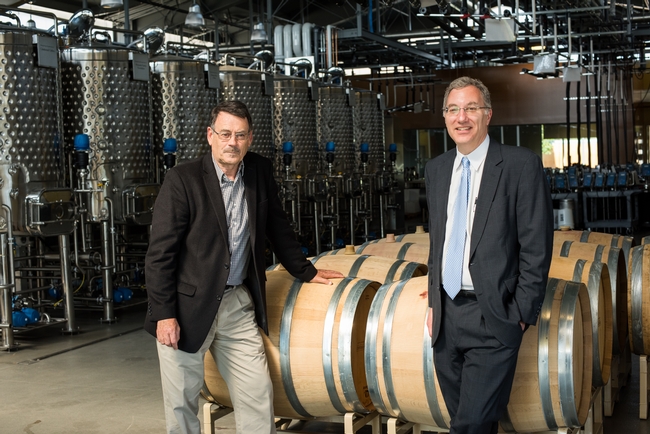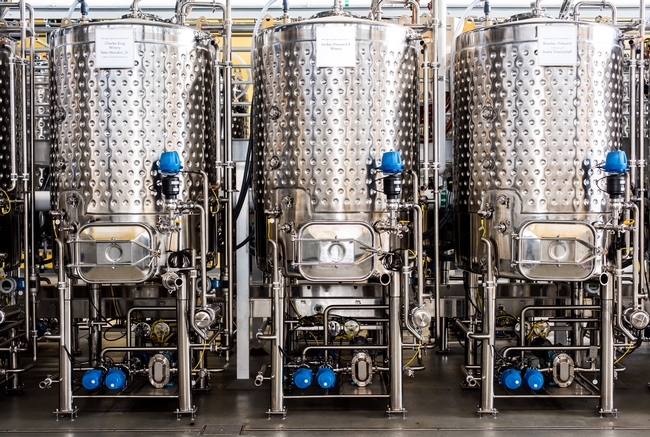Ten large, shiny tanks stand near the Robert Mondavi Institute for Wine and Food Science at UC Davis, holding more than a year of rainwater and the key to processing food and drink during a drought. The water tanks, and the teaching-and-research winery they support, are showing students and winemakers throughout the world how to reduce processing costs, improve wine quality, and protect the planet's dwindling natural resources.

The work is the latest in more than a century of trail-blazing viticulture and enology science at UC Davis. UC Davis researchers are working with Cooperative Extension specialists and farm advisors with UC Agriculture and Natural Resources to help winemakers and grape growers sustainably produce premium wine.
Water is critical to winemakers in drought-stricken California and beyond. Grapes aren't a very thirsty crop to grow, but keeping fermentors clean is another story.
A typical winery uses four to six gallons of water after the grapes are harvested to produce one gallon of wine, and most of that water is used to wash equipment. Boulton and David Block, chair of the UC Davis Department of Viticulture and Enology, are developing self-cleaning fermentors capable of recycling 90 percent of that water. The goal: affordable technology and alternative practices that use less than one gallon of water to produce one gallon of wine.
Winemakers currently remove sticky, fermented, grape residue from tanks with water and elbow grease. Clean-in-place technology replaces hand-cleaning with an automated system that sprays tanks with diluted solutions of potassium hydroxide and potassium bisulfate.
“The dairy industry has used clean-in-place technology since the 1960s and the pharmaceutical industry since the 1990s,” says Block, a chemical engineer and enologist who helped the pharmaceutical industry manage clean-in-place technology before coming to UC Davis in 2008. “It's a little different with dairy and pharmaceuticals, where poor sanitation can kill you, but the concept is similar.”

“We will filter and reuse that water at least five times, hopefully one day up to 10 times,” Boulton says. “It's not waste water. It has no phosphates, no nitrates, and no chlorine. Clean-in-place technology represents a huge potential for water and labor savings.”
Industry is starting to notice.
“Clean-in-place technology is very attractive to us,” says Ashley Heisey, director of winemaking at Long Meadow Ranch in Rutherford and a UC Davis viticulture and enology graduate. “Water is such a critical issue. Long Meadow Ranch owners Ted, Chris, and Laddie Hall built our facilities with great concern for the environment, and thanks to UC Davis, we can take it one step further.”
In Sacramento, grocer Darrell Corti from Corti Brothers Market says where UC Davis leads, winemakers will eventually follow.
“What we know about grape-growing and winemaking is primarily due to the work they do at UC Davis,” Corti says.
A longer version of this story is in the magazine Edible Sacramento.